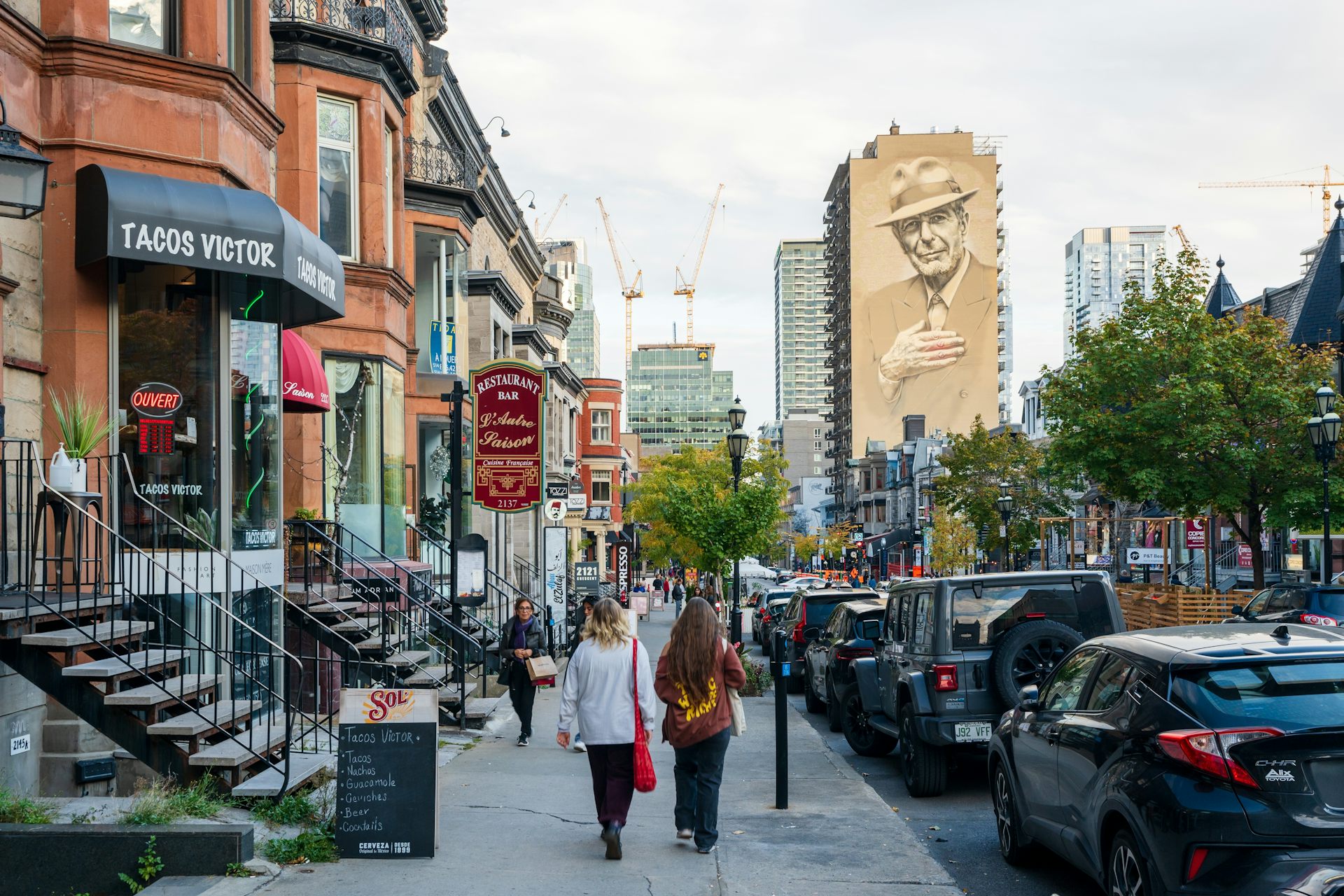Urban studies is sometimes considered a loosely defined interdisciplinary academic domain, lacking the scientific rigour needed to understand cities.
In Canada, urban studies is a little more than 50 years old; a young field, by scientific standards. This begs the question: does urban studies provide an introduction to cities in general for university students? Or is it, instead, the basis of a distinctively Canadian way to understand our cities and urbanity?
As director of the Villes Régions Monde (VMR) (Cities Regions World) network, a Québec-based network of urban studies researchers, and as director of the Urban Studies Program at Simon Fraser University, we brought together 23 colleagues to craft an edited volume, published in English and French: Crossing Paths Crossing Perspectives: Urban Studies in British Columbia and Quebec.
We compared the past decade of research in urban studies in Québec and in British Columbia. The project was guided by three objectives that allow us to respond to the question of how to define urban studies in Canada.
Structuring research through funding
Our first objective was to to create an encounter between francophone and anglophone urban studies in Canada, connecting different scholarly traditions and cultures across the country. Above and beyond the differences between Québec and B.C. — and more specifically, those of the cities of Montréal and Vancouver — is there common ground in urban studies?
The book begins by showing the importance and influence of funding sources and networks: these structure and guide research, and explain in part the substantive research that gets published. The existence of the Villes Régions Monde network, which offers funding through the Fonds québécois de recherche société et culture to a membership of more than 70 researchers across Québec, and the absence of an equivalent in other Canadian provinces, is a case in point.
Whereas urban studies has existed as an undergraduate program option since the 1970s at certain universities in Québec, it’s grown rapidly over the past 25 years in anglophone Canada, including at York, the University of Toronto, the University of British Columbia and Simon Fraser University.
This evolution is part of ensuring secondary and post-secondary pathways are better aligned with the job market. A symposium on the book, published in June 2024 in the Journal of Canadian Studies, offers additional reflections on the meaning of urban studies in Canada.
Empirical research, theoretical development
Despite the differences between B.C. and Québec, the book demonstrates the empirical nature of urban studies in Canada. Unlike urban studies in France, the U.K. and Brazil, urban studies in Canada is more focused on pragmatically addressing urban trends and their consequences, rather than developing theories to explain these phenomena.
Theoretical research tends to have a higher status in academia, but empirical research is in high demand by decision-makers. This raises the question: what would it mean for urban researchers in Canada to become more theoretical? Would we lose our capacity to influence decision-making?
While the empirical side of urban studies research tends to diminish credibility in the eyes of the so-called classical disciplines due to the absence of a strong theoretical foundation, the book shows how claiming shared space between disciplines helps urban research respond to contemporary urban challenges.
After all, contemporary urban challenges do not respect disciplinary boundaries; more often than not, they have multiple sociological, economic and geographical dimensions, among others. What this interdisciplinarity concedes in terms of disrepect for disciplinary boundaries, it gains in terms of distinctive research opportunities.
In fact, another aim of this project was to counter the “extroversion” of urban studies practice in Canada, in the sense of extroversion explained in this article in The Conversation on universities in Africa.
A more introverted approach may be needed for the possibility of a distinctively Canadian theory and practice of urban studies. In the era of reconciliation, the necessity of opening doors to other forms of knowledge and understanding invites urbanists to decolonize our understanding of Canadian cities. Kamala Todd, one of the authors to our book, offers an explanation of her Indigenous approach to urban research:
“Are we as urban studies scholars and practitioners open to acknowledging the limits and harms within conventional, dominant approaches to urban planning and knowledge generation? In my work, I share my learnings and lived experiences as an Indigenous person on someone else’s territories as a reminder that the city is land, that story is knowledge, that the original laws, languages, and planning traditions of the land are important to learn and uphold. These are teachings urgently needed for our times.”
Foster dialogue
By the same token, this book — that we intentionally pursued as a bilingual project — demonstrated the difficulties of simultaneous publication in two languages, as well as the need to do so in order to encourage and value meaningful encounters and dialogue.
The limits of translation soon became apparent. They called into question the use, within different languages, of distinct terms to describe the same idea.
If our book shows that, in academic terms, urban studies is a field of scholarly transgression, it also highlights the specific potential within urban studies research to generate grounded and contextualized urban understandings.
The format of this book itself is witness to this potential: our third aim was to situate the work in opposition to dominant academic publishing practices. Effectively, the book does not present any new results: “Crossing Paths presents no original research.”
Or, at least, the novelty of what the volume offers does not conform to the normal expectations of academic research. Yet, against the current of an exponential growth in the number of articles published, we opted to step back and initiate an encounter between authors, asking instead for an expression of the comparative urban dynamics at play in Montréal and in Vancouver, in the style they saw fit.
Such a perspective is rarely accorded value in contemporary research. And yet, is it not important for researchers to ask themselves, and one another, how we do research, and how this effects our understanding of urban systems, on the one hand, and the evolution of urban studies research, on the other?
Illustrating urban studies
Drawings in our book by Dionne Co highlight how artistic representations can both communicate and provide a new understanding of urban phenomena. The illustrator explains:
“Illustrations are tools for illumination: they clarify and present new understandings of places, people and things in specific ways that are balanced and inspiring, unique to the medium of visual representation. Cities have grown with the help of drawings since time immemorial: plans, sketches, diagrams, and posters to convey ideas in forms readily understandable to the public. It is along these same lines that these illustrations have been included alongside the text: to foster common understandings in two contrasting worlds of urban studies.”
Crossing Paths Crossing Perspectives shows that, far from being limited to an academic discipline, urban studies is a specific way of analyzing urban spaces in Canada. The book underlines a number of new frontiers and intersections to be situated and transgressed, new dialogues to be initiated across languages and graphic representations. And finally, it shows the need to exchange knowledge old and new.



 Moldova Criticizes Russia Amid Transdniestria Energy Crisis
Moldova Criticizes Russia Amid Transdniestria Energy Crisis  U.S. Treasury Yields Expected to Decline Amid Cooling Economic Pressures
U.S. Treasury Yields Expected to Decline Amid Cooling Economic Pressures  Geopolitical Shocks That Could Reshape Financial Markets in 2025
Geopolitical Shocks That Could Reshape Financial Markets in 2025  Moody's Upgrades Argentina's Credit Rating Amid Economic Reforms
Moody's Upgrades Argentina's Credit Rating Amid Economic Reforms  China's Refining Industry Faces Major Shakeup Amid Challenges
China's Refining Industry Faces Major Shakeup Amid Challenges  China’s Growth Faces Structural Challenges Amid Doubts Over Data
China’s Growth Faces Structural Challenges Amid Doubts Over Data  Gold Prices Fall Amid Rate Jitters; Copper Steady as China Stimulus Eyed
Gold Prices Fall Amid Rate Jitters; Copper Steady as China Stimulus Eyed  Gold Prices Slide as Rate Cut Prospects Diminish; Copper Gains on China Stimulus Hopes
Gold Prices Slide as Rate Cut Prospects Diminish; Copper Gains on China Stimulus Hopes  Lithium Market Poised for Recovery Amid Supply Cuts and Rising Demand
Lithium Market Poised for Recovery Amid Supply Cuts and Rising Demand 



























